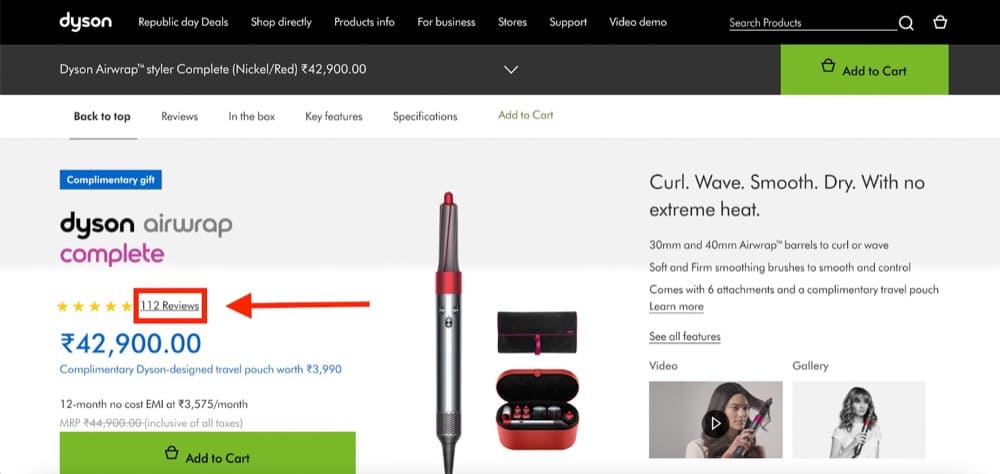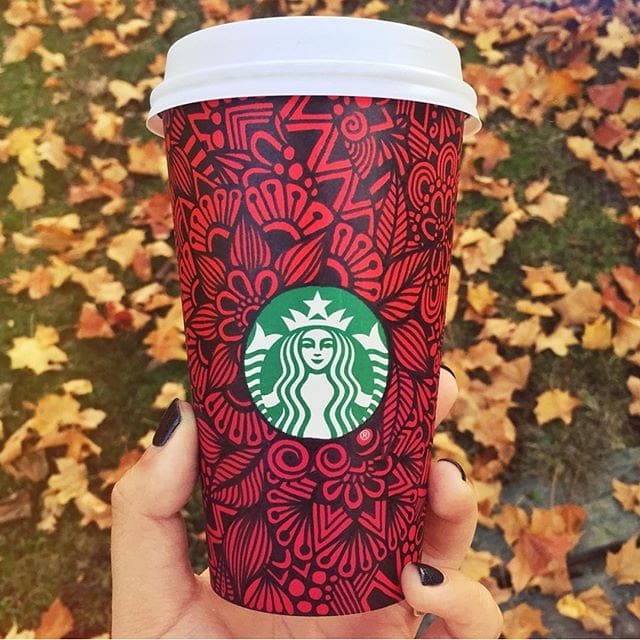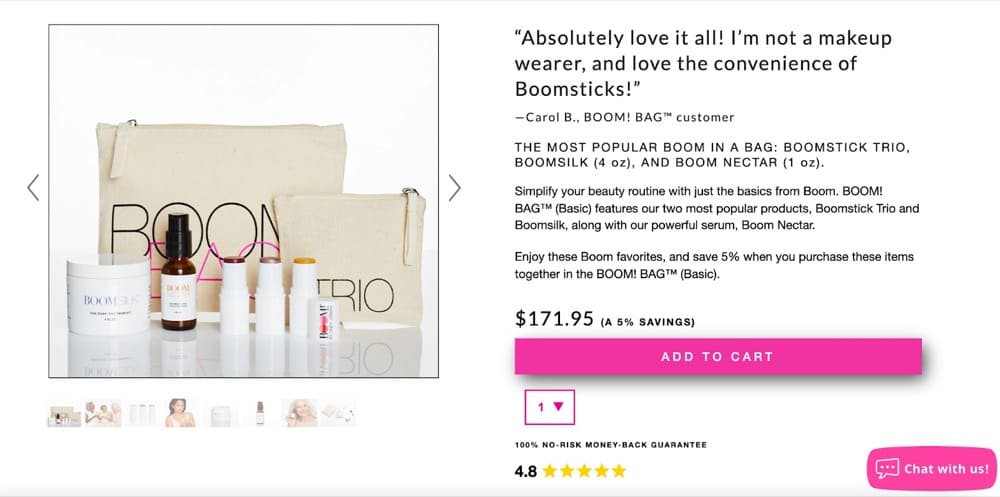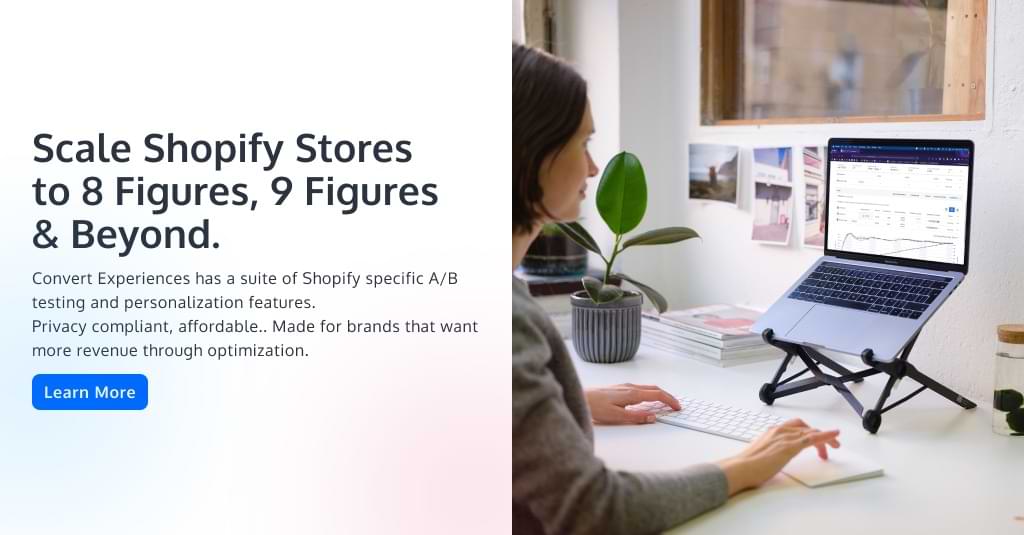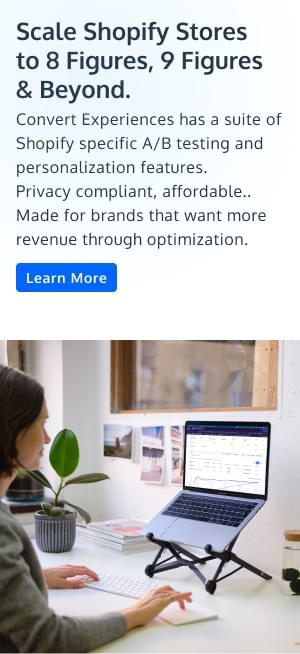How to Get Over the Sales Slump After the Holiday Season
It’s no secret that the holiday season is a popular time for shoppers. In fact, many eCommerce businesses rely on sales generated during this time to make their year-end totals.
From Black Friday to New Year’s eve, brands keep throwing offers, and their customers go gaga over shopping. This makes the end of the year holiday season the most profitable time for eCommerce businesses.
Even in 2021, despite the Covid situation, a report by Mastercard SpendingPulse showed an 8.5% boost in retail sales during the holiday season compared to last year. Online sales surged 61.4% compared with 2019, the pre-pandemic period.
During an interview with CNBC, Jan Kniffen, the CEO of J. Rogers Kniffen Worldwide, said
Omicron has slowed down experiences, but it hasn’t slowed down things at all.
He also told CNBC that in terms of holiday sales, 2021 has proven to be the strongest year in the last 17 years.
While the sales keep growing year after year during the holiday time, one more thing is constant: the drop in sales in the first quarter.
Every year, during the first few months, the sales start to take a nosedive, leaving businesses scuffling with dropping revenue.
To help eCommerce business owners get over the slump more quickly, we have put together some concrete tactics. No matter if you run your business on Amazon or chose an Enterprise e-commerce platform, these tips are effective for all kinds of businesses.
Discounts: A Different Perspective
Customers love deals–or do they?
Discounts may look like a surefire way to turn the tide and get the revenue back on track during the slump time. 92% of the U.S. population use coupons for shopping, making it one of the most popular marketing tools even after 120 years of its inception.
But discounts are double-edged swords.
They may entice new prospects to commit to making that first purchase, but given too generously, they set up a poor narrative of only shopping when discounts are available. You don’t want to get trapped in this rut.
This is where you need a strategy to turn first-time customers into returning customers.
It’s much easier to double your business by doubling your conversion rate than doubling your traffic.
Bryan Eisenberg, Co-founder of Buyer Legends and N.Y. Times bestselling author.
The idea here is to focus on gaining and retaining loyal customers. How can your product/service add value to your customers’ journey? How can you make your customers feel important and build a sense of trust? How can you differentiate your brand from the rest?
Start Building Your Brand Story From The Very First Day
Marketing and advertising are all about getting your brand in front of your target customers.
But the results are different for different brands. This difference is because of the size of the brand behind the campaign. Large companies investing smaller amounts can still grow more than small companies investing bigger amounts.
This is why you need to work on building a brand story from day one.
A brand story shares the series of events that built the foundation of your business and expresses how that narrative still drives your brand’s mission.
A compelling brand story will help your customers remember your brand, develop empathy, and ultimately make them care for it. As a result, it will help you get on the top in your category. Once you reach that position, it becomes much easier to defend yourself from the sharks.
For example, Tentree is a Canada-based apparel company that plants ten trees for every product sold. Although they sell sustainable, wear anywhere, high-quality apparel, it’s still a mission-first company. Now their mission is something that connects them with their customers—resulting in a loyal customer base.
A/B Test Your Discount Offers
Finally, have you A/B tested what discounts do for your business in the first place? If not, it’s a perfect time.
Events like Black Friday have a lot of momentum built through repetition. Shoppers are trained to buy, and a great “offer” doesn’t always have to be a 70% discount. Optimizers frequently come across seemingly controversial results where larger discounts do not affect conversion rate or revenue.
The customers mostly care about just the discount, no matter how much that is. In fact, they might not even care if you’re offering a discount or selling it at full price. Many customers keep a list of to-buy products on the Black Friday sale. So whether there’s a discount or not, they’ll buy those products.
Another smart tactic that you use is the Rule of 100.
Jonah Berger, marketing professor and author of Contagious: Why Things Catch On, tested the two popular ways of offering discounts, % off or $ off. According to his research,
- Consumers are more attracted to a percentage discount for products under $100. So 10% off a $100 shirt is more appealing than $10 off a $100 shirt, even if both mean the same.
- A $ off discount works better than a % off for products priced over $100. So for $1000 shoes, consumers would prefer a $100 discount than a 10% off offer.
However, no matter how profitable offering discounts can be for your business, discounts don’t have to be your default. And if they aren’t, it is a lot easier to get over the January slump. As your audience buys because of genuine resonance (with your vision/mission/brand) or because they believe that your products are objectively better.
But You Already Did Discounts All Q4 Long. Now What?
If you don’t like the idea of offering discounts after months of offering them, we have got some better ideas as well.
Invest in Optimizing Your Best Seller
Most of your revenue probably comes from your best-seller.
It is a great idea to run a few quick A/B tests on this page (it has enough traffic) and secure wins. Even a 1% improvement in purchases here may make Q1 profitable.
Another quick win can be experimenting with your navigation. If you are anything like 99% of the stores in business today, your menus can use a clarifying and better design. If the design seems a bit much – at least make sure, shoppers aren’t returning empty-handed because they don’t know where to go or what to do.
That’s why it’s imperative to avoid overlapping and redundant categories. The reason being your customers don’t understand the nuances between the categories the way you do.
If they get confused at any point, the user experience gets affected. And that ultimately harms your brand, making customers leave your website or, worse, abandon your brand.
So invest in optimizing your best-seller product’s page placing the elements that guide your customer throughout their shopping journey.
Elements like an explainer video, add to cart button, images gallery, etc. And never stick to one design. You can always A/B test to have better conversion rates.
A tool like Convert Experiences can help you run your A/B tests and split experiments for picking winner designs and improving conversion rates.
Also, having a reviews page for your best-selling products is the best way to share your product qualities. Add a reviews page link to your product’s page and allow your customers to check it for understanding your product better.
It’s like word-of-mouth marketing. You allow your existing customers to share insights or share their experiences with your product.
This, in turn, builds a sense of trust in your new visitors and also turns potential customers into customers and then into loyal customers.
Don’t Neglect New Buyers
The holiday or shopping season must have got you new buyers, and now it’s time to nurture them into buying again.
To nurture the new customers, your first step should be segmenting. Segmenting your audience means identifying subgroups within your new customer base.
You can segment your audience based on these categories:
- Customers who used discount coupons: Target the ones that used codes and help them see what upsells and cross-sells make sense. Maybe it is time to get them on the subscription for the item they purchased.
- Customers who didn’t use the discount coupons: The customers who didn’t use any coupons, make them a part of your loyalty program, give them free loyalty points and nudge them towards the next sale. Remember, the idea is to stay top of mind, get another sale in the door and make buying from you a habit.
- Customers who used gift cards: The customers who used gift cards didn’t technically buy from you. And now it’s time to entice them with how-tos and upsells. Leverage video content to engage them with your brand. Retarget them on social media, engage with them, and make them part of your brand family.
Roll Out the Red Carpet for VIPs
Remember the Reward Points
Customers might forget about your rewards programs or even their reward points.
Remind them of their accumulated loyalty points and what they can do with them. This will not just help you recover from the holiday season sales slump but will also improve the overall retention rate.
But before doing that, make sure you have got a system for your customers to claim points. Once you have it, start a separate email marketing campaign, and send follow-up emails to customers with reward points in their accounts. In addition, you can also send push notifications to your app users.
For example, Starbucks’s reward program is one of the most popular rewards programs out there. The rules are simple, you just need to buy their items from their official app, and, in turn, you get rewards. You can collect these rewards to get something for free. So with each purchase, you get closer to a special reward. Simple and effective!
Show Them How Special They Are
Another way to make your VIP customers feel special is by going the extra mile. For example, sending them a personalized “Thank You” note. Here adding the “from CEO” angle always works to wow.
One of the best examples of how to make your VIP customers feel special is Maker’s Mark. Currently, the brand runs a very popular ambassador program reserved for its most loyal customers that offer that segment of customers some unique perks.
When you sign-up for their program, you get several benefits. To start with, your name is put on a real Maker’s Mark aging bourbon. After that, you keep getting updates on how your bourbon is aging. Furthermore, you can also buy a bottle from your own batch, and you get access to Ambassadors-only merchandise.
Host Interactive Sessions
Host an interactive session like an AMA, challenge, or a special event. The aim of such sessions should be to help buyers achieve their desired outcome with your product. Hosting interactive sessions will not just help you engage with your VIP customers but will also help you create brand awareness or, more specifically, help your customer understand your products better.
You can also make these sessions about generating funds and supporting your mission. After all, these are your biggest customers, and if they’re buying a lot, chances are they believe in your brand story.
For example, an outdoor equipment retailer brand REI runs a special membership program. The members get access to curated adventure trips, exclusive classes, events, tours, and much more. According to REI, with the membership plan, they directly embed their customers into the heart of the company and its values.
Referrals Work like Magic and so Does UGC
Lastly, introduce them to your referral marketing program. According to Social Media Today, 77% of consumers say that word-of-mouth feedback from family or friends is the most persuasive deciding factor while making a purchasing decision.
Moreover, you can also categorize your VIP customers as your brand ambassadors to further cement their loyalty. This way, they will share about your products with their community, and you can also get User Generated Content (UGC).
A report by Tint suggests that 93% of marketers agree that consumers trust content created by customers more than content created by brands. In simple words, humans trust humans and so this can become an effective part of your lifecycle marketing strategy.
One of the best examples of brands using UGC is Starbucks. In 2014, Starbucks launched a contest on Twitter and asked their customers to do some artistic doodling on their white cups and share it under the hashtag #WhiteCupContent. In mere three weeks, their customers posted over 4000 pictures of cups with doodles. Looking at the success of the campaign, Starbucks launched another campaign in 2016 that was another massive hit.
Apart from Starbucks, popular brands like Apple, Adobe, Coca-Cola, Netflix, and several other companies have also leveraged UGC.
Make Returns a Great Experience
Whether it’s the seasonal slump in January or the rest of the year, eCommerce returns are a part of retail life. And they are inevitable. All you can do is either convert a return request to exchange or turn every return into an opportunity.
Shawn McIntyre, the Director of Digital at Tentree, says,
We definitely try to understand why customers are returning a product and check if any other size or color might be ideal.
Turning Return Requests into Opportunities
As said, if you’re an eCommerce business, returns will be there throughout the year. You might decrease the number but can’t make it zero.
So what you need to do is make returns a great experience for your customers. Aim for a five-star return experience, and follow the successful refund with any email that requests them to give you a second chance and showcase your best-sellers. This simple strategy will, in turn, help you build relationships with your buyers.
Remember–even if you don’t provide an easy return process, you’ll have returns. It will just frustrate and disappoint your customers. This might lead them to abandon your brand permanently.
Here are a few tips to make your return process hassle-free:
- Start by looking at the heat map on your returns policy page.
A returns policy page heatmap will help you see which elements of the page are receiving the most clicks and which ones are getting the least. This will help you understand what your customers are looking for on your returns policy page. - Make all the necessary elements visible.
One of the biggest problems that most company websites have is missing important information. You don’t want your customers to navigate throughout your website to find the answer to just one question. It will frustrate them. Make things easier to find.
Start experimenting with the lowest hanging fruits on your returns policy page so that you can experiment as much as possible and analyze the results. This will help you create the best possible returns policy page.
Launch a New Product. Just Kidding. (But) You Can Bundle.
A lot of articles and guides on the internet will tell you to launch another product for coping with the January sales slump. This isn’t a good idea, especially if you don’t have any new product in the pipeline.
Now, what you can do instead is bundle up your products.
Creating a bundle of products or “bags” is a very popular strategy in several industries. Several brands create a bundle of old products and launch them as a new product.
For example, instead of selling fries, burgers, and soda separately, McDonald’s offered all of them as a bundle, and today it’s one of the most selling items.
The key thing here is to ensure that the bundle is positioned to catch the fancy of buyers post-New Year. So make a lucrative, useful, and budget-friendly offer for your customers, and you may even have your next hero product.
Plan for the Year Ahead
Low sales after Christmas is usual every year. Many companies have accepted the post-holiday sales slump as a part of their retail journey. However, it can be devastating for small business owners or new entrepreneurs.
But it can be avoided if you use the right marketing efforts.
While we have enlisted all the best practices to help you increase sales after Christmas, it’s now your turn to implement them. Ups and downs are normal in the eCommerce space. The only thing you need to remember is, don’t go quiet. Instead, show up, turn the tables and never use SALE as an incentive.


